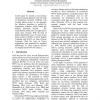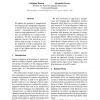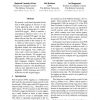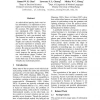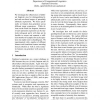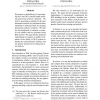COLING
2010
13 years 6 months ago
2010
In this paper we present a novel phrase structure parsing approach with the help of dependency structure. Different with existing phrase parsers, in our approach the inference pro...
COLING
2010
13 years 6 months ago
2010
This paper presents a framework for combining semantic relations extracted from text to reveal even more semantics that otherwise would be missed. A set of 26 relations is introdu...
COLING
2010
13 years 6 months ago
2010
We address the problem of unsupervised and language-pair independent alignment of symmetrical and asymmetrical parallel corpora. Asymmetrical parallel corpora contain a large prop...
COLING
2010
13 years 6 months ago
2010
Because English is a low morphology language, current statistical parsers tend to ignore morphology and accept some level of redundancy. This paper investigates how costly such re...
COLING
2010
13 years 6 months ago
2010
We present a web-based algorithm for the task of POS tagging of unknown words (words appearing only a small number of times in the training data of a supervised POS tagger). When ...
COLING
2010
13 years 6 months ago
2010
As unlexicalized parsing lacks word token information, it is important to investigate novel parsing features to improve the accuracy. This paper studies a set of tree topological ...
COLING
2010
13 years 6 months ago
2010
This paper presents a novel method for acquiring a set of query patterns to retrieve documents containing important information about an entity. Given an existing Wikipedia catego...
COLING
2010
13 years 6 months ago
2010
A weakly supervised method uses anonymized search queries to induce a ranking among class labels extracted from unstructured text for various instances. The accuracy of the extrac...
COLING
2010
13 years 6 months ago
2010
We investigate the effectiveness of different linguistic cues for distinguishing literal and non-literal usages of potentially idiomatic expressions. We focus specifically on feat...
COLING
2010
13 years 6 months ago
2010
We propose a methodology for investigating how well NLP systems handle meaning preserving syntactic variations. We start by presenting a method for the semi automated creation of ...
